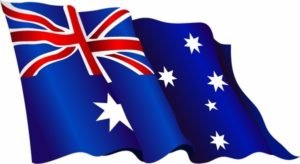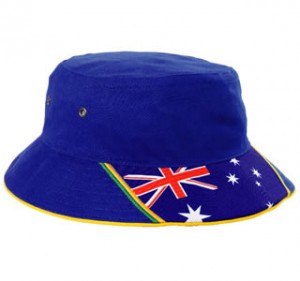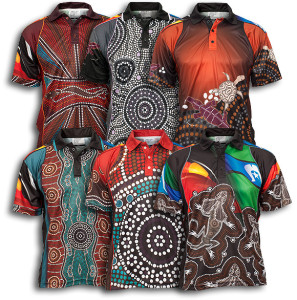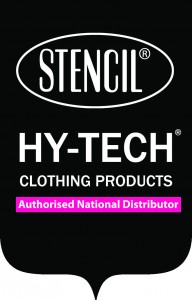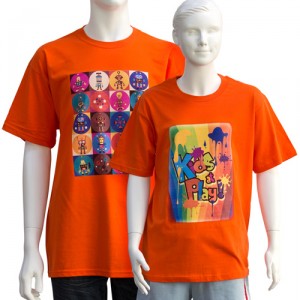On Australia Day we come together as a nation to celebrate what's great about Australia and being Australian. It's the day to reflect on what we have achieved and what we can be proud of in our great nation. It's the day for us to re-commit to making Australia an even better place for the future. On this day, Australian adorn themselves with all sorts of Aussie promotional products to celebrate the day. Let us help you by putting some suggestions together for your next Australia Day corporate event or celebration. Bongo has a large range of Australiana products that are perfect not only to celebrate Australia Day, but to use throughout the year. Products include Aussie clothing, Aussie flag bags, Aussie flag keyrings, Aussie Flag Pins, Aussie flag shirts, Aussie caps & hats - as well as a huge range of Aussie supporter ideas.
Australia Day is the official National Day of Australia. Celebrated annually on 26 January, it marks the anniversary of the 1788 arrival of the First Fleet of British Ships at Port Jackson, New South Wales, and the raising of the Flag of Great Britain at that site by Governor Arthur Phillip. In present-day Australia, celebrations reflect the diverse, multicultural society and landscape of the nation, and are marked by community and family events, reflections on Australian history, official community awards, and citizenship ceremonies welcoming new immigrants into the Australian community.
The meaning and significance of Australia Day has evolved over time. Unofficially, or historically, the date has also been variously named "Anniversary Day", "Invasion Day", "Foundation Day", and "ANA Day". 26 January 1788 marked the proclamation of British sovereignty over the eastern seaboard of Australia (then known as New Holland).[4] Although it was not known as Australia Day until over a century later, records of celebrations on 26 January date back to 1808, with the first official celebration of the formation of New South Wales held in 1818. On New Year's Day 1901, the British colonies of Australia formed a Federation, marking the birth of modern Australia. A national day of unity and celebration was looked for. It was not until 1935 that all Australian states and territories had adopted use of the term "Australia Day" to mark the date, and not until 1994 that the date was consistently marked by a public holiday on that day by all states and territories.
In contemporary Australia, the holiday is marked by the presentation of the Australian of the Year Awards on Australia Day Eve, announcement of the Australia Day Honours list and addresses from the Governor-General and Prime Minister. It is an official public holiday in every state and territory of Australia, unless it falls on a weekend in which case the following Monday becomes a public holiday instead. With community festivals, concerts and citizenship ceremonies, the day is celebrated in large and small communities and cities around the nation. Australia Day has become the biggest annual civic event in Australia.
Aboriginal Indigenous clothing convey strong messages with meaningful aboriginal indigenous designs. We have a large range of indigenous designs and we can custom make your own unique design as well. Just let us know your ideas and thoughts and we can put the design together for you.
Our polo shirt designs feature Kangaroos, Emus, Geckos, Frilled Neck Lizards, Snakes, Turtles combined with unique fit designs that include the Aboriginal and Torres Strait Islander flags featuring on the shirt.
Other designs feature Dot designs which include a number of important colors. For example yellow (representing the sun), brown (the soil), red (desert sand) and white (the clouds and the sky). These are traditional Aboriginal colours.
On modern artwork, dots are generally applied with one of two instruments, (1) bamboo satay sticks and (2) ink bottles. The larger flat end of bamboo satay sticks are more commonly used for single application of dots to paintings, but the sharp pointier end is used to create fine dots. To create superimposed dotting, artists may take a bunch of satay sticks, dip the pointy ends into the paint and then transfer it onto the canvas in quick successions of dotting.
These are only a few examples of what can be achieved with Indigenous clothing designs. These designs show the capabilities and possibilities of what you can create with Indigenous art and cultural themes.
We work together with indigenous organizations in creating their own unique design that fulfills their cultural and artistic requirements.
This sublimated printed clothing range includes polo shirts, singlets, kids polos, sportswear and workwear.
Check out the latest range of Stencil polo shirts, t-shirts, business shirts and jackets.
The Stencil range of clothing has been bringing innovative new designs and fabrics into the Australian corporate, promotional, uniform and sportswear market. Stencil is best known for their high-quality, high-concept fabrics such as a yarn-woven Cool-Dry®, liquid-repelling Nano-Gear®, the vibrant and super-comfortable Solar-Lite® and their most recent addition, Bio-Weave®, a silky blend of plant cellulose and Cool-Dry® yarn.
Stencil's product range spans from distinctively styled polos and t-shirts for both men and women to business shirts, cold-weather clothing (including fleeces and jackets) and custom orders. Though Stencil is constantly working on creating and refining their new fabric technologies for each season, Stencil also appreciate the value of more traditional fabrics, from soft cottons to poly/cotton waffles. By understanding the intrinsic values of different materials, Stencil is able to match the ideal characteristics for a given item of clothing to the most appropriate fabric or blend.
Stencil carries a full stock service on all of their product lines with the promise of fast & professional service. Stencil trusts that their range will help you and your label stand out from the crowd.
T-shirts printed in full colour
NO SET UP CHARGE 🙂 Our new range of digitally printed promotional t-shirts allows small production quantities for cheaper prices. No more costly screen set up costs - just a one cost t-shirt price. Full colour printing available on quantities as low as 20 units on top quality 100% cotton t-shirts.
One of the earliest examples of T-shirts with a logo or decoration can be found in the 1939 film The Wizard of Oz. Three men attending to the Scarecrow at the Wash & Brushup Company in Emerald City are seen wearing green T-shirts with the word "Oz" printed on the fronts.
In the early 1950s several companies based in Miami, Florida, started to decorate T-shirts with different resort names and various characters. The first company was Tropix Togs, under founder Sam Kantor, in Miami. They were the original licensee for Walt Disney characters in 1976 including Mickey Mouse and Davy Crockett. Later, other companies expanded into the T-shirt printing business, including Sherry Manufacturing Company, also based in Miami. Sherry, started in 1948 by its owner and founder Quinton Sandler as a screen print scarf business, evolved into one of the largest screen printed resort and licensed apparel companies in the United States.
In the 1960s, the ringer T-shirt appeared and became a staple fashion for youth and rock-n-rollers. The decade also saw the emergence of tie-dyeing and screen-printing on the basic T-shirt and the T-shirt became a medium for wearable art, commercial advertising, souvenir messages and protest art messages. Psychedelic art poster designer Warren Dayton pioneered several political, protest, and pop-culture art printed large and in color on T-shirts featuring images of Cesar Chavez, political cartoons, and other cultural icons in an article in the Los Angeles Times magazine in late 1969 (ironically, the clothing company quickly cancelled the experimental line, fearing there would not be a market). In the late 1960s Richard Ellman, Robert Tree, Bill Kelly, and Stanley Mouse set up the Monster Company in Mill Valley, California, to produce fine art designs expressly for T-shirts. Monster T-shirts often feature emblems and motifs associated with the Grateful Dead and marijuana culture. Additionally, one of the most popular symbols to emerge from the political turmoil of the 1960s were T-shirts bearing the face of Marxist revolutionary Che Guevara.
Today, many notable and memorable T-shirts produced in the 1970s have become ensconced in pop culture. Examples include the bright yellow happy face T-shirts, The Rolling Stones tops with their "tongue and lips" logo, and Milton Glaser's iconic "I ♥ N Y” design. In the mid-1980s, the white T-shirt became fashionable after the actor Don Johnson wore it with an Armani suit in Miami Vice.

